Super Micro Computer, Inc. (SMCI) on Q3 2021 Results - Earnings Call Transcript
Operator: Good day, thank you for standing by. Welcome to the Super Micro Fiscal Q3 2021 Earnings Call. At this time, all participants are in a listen-only mode. Later, we will conduct a question-and-answer session, and instructions will follow at that time. I would now like to turn the conference over to your host, Ms. Nicole Noutsios, Investor Relations. Nicole Noutsios: Good afternoon and thank you for attending Super Micro's call to discuss financial results for the third quarter of fiscal 2021 which ended March 31, 2021. By now you should have received a copy of the news release from the company that was distributed at the close of regular trading and is available on the company's website. As a reminder, during today's call, the company may refer to a presentation that is available to participants in the IR section of the company's website under Events and Presentations tab. We have also published management scripted commentary on our website. Charles Liang: Thank you. Nico and good afternoon everyone. Last quarter, we have performed, our growth strategy well, by winning new key customers extended our global operation and introduced a whole new generation of hotels. We have released our fiscal 2021, third quarter financial results. Let's take a look at some highlights. Our fiscal third quarter net sales totaled $896 million, up 16% year-over-year and up 8% sequentially. For the first time in our company history since IPO, the revenue from seasonally-weak March quarter significantly surpassed that of the December quarter. Our fiscal third-quarter non-GAAP earnings per share was $0.50, above the midpoint of our previously guided range of $0.37 to $0.57. In this quarter, we also generated a record revenue from the Asia Pacific region, demonstrating our continued and expanding traction in Asia. We continue to execute our three-year growth strategy highlighted in our recent investor update on March 4th. Our progress, judged by historical industry growth rates, has propelled us to resume the position of the fastest growing U.S.-based server/storage manufacturer. More importantly, we achieved all this despite so much of our focus having been on growing the company's long-term foundation. David Weigand: Thank you, Charles. Since moving to the CFO role at Super Micro last quarter, I am even more excited about the future of the company than when I joined in 2018. We continued to execute in all major areas of the company this quarter and are pleased with our results and outlook. Our fiscal third quarter revenue totaled $896 million. This reflects a 16% year-on-year increase from the same quarter of last year and an 8% increase from the second quarter of fiscal year 2021. Systems comprised 77% of total revenue and the volume of systems and nodes shipped were up sequentially and year-over-year. System ASPs also increased year-over-year and quarter-on-quarter. Geographic performance was strong across all major geographies. On a year-on-year basis, the U.S. increased 18%, Asia increased 29%, and Europe increased 3%, Rest of World decreased 12%. On a sequential basis, U.S. sales increased 8% quarter-on-quarter, Asia increased 28%, and Europe increased 5%, Rest of World decreased 46%. Nicole Noutsios: Operator, we can start with questions. Operator: Your first question is from Mehdi Hosseini from SIG. Mehdi Hosseini: A couple of follow-ups. I am just trying to better understand as you look into the second half, especially given your strong revenue guide for the June quarter. How do you see momentum into September and December quarter and how do you see some of the demand drivers like new servers, CPU and other cloud, or data center related drivers impacting your revenues into the second half and I have a follow-up. Charles Liang: Yes, I mean, as you know, we had spent a local for April to engage high profile accounts in last 3 months and I'd like to share we see it as we achieved an achievement. So now we grow a lot of high profile account and those account, lots of them start August and that's why we see March, we already have a strong quarter and then Q1 until our June quarter we are very strong, would it be the first time over $1 billion. In September, Steel, we see that pipeline is strong as well. Shortage, we will soon reach our, kind of a long-term pattern very closely and the shelter in this situation continue to be very tough, but as of today, our home is, the home is from our vendors have been praising you good. So I feel pretty comfortable, although there are strategy everywhere. Mehdi Hosseini: Okay. And in that context, how do you see increasing in commodity prices for instance, storage and DRAM impacting your margin profile into the second half. Charles Liang: For most account indeed our customer happy to accept the higher price basically chip what has been healthy margin and viable pay course, we pay most of the customer happy to expect because it's kind of surprise basically. So we were to valuable customers will negotiate, based condition, for our sale for our customer but this year, most of the Spain. And we expect that close. Mehdi Hosseini: Just a quick follow-up. Have you been able to build a strategic inventory so that you would benefit from lower cost, as you think about the, as you think about the shipment over the next, let's say six months or do you have to continue to buy higher cost inventory and then you would pass on that incremental cost of the customer? Charles Liang: Well this is difficult question. Indeed we happen maturity, we have since many months ago. So yes, you are right, we had increased our inventory since I would say three months, potentially ago. So we have been lacking in that area, but still our inventory limited. We saw growing very strong demand, very soon. I mean, we had to kind of our pay higher for our newly entered this year. Operator: Your next question is from Ananda Baruah. Ananda Baruah: Yes, good afternoon and thanks for taking the question and congratulations on the results and I'm putting them up just after you've done the analyst event. So and that's pretty exciting to see. I guess a couple of follow-one to the direction that Mehdi was kind of asking questions could you give a little, a little more context in the key vertical areas where you're seeing the most pronounced order pick options and I guess kind of, off the top of my head, I'm thinking, hyperscale cloud customers versus large enterprise customers like on premise and also the carriers for 5G and I know there's new activity going on in all of in each of the buckets. But just interested in getting context to where you're seeing the most pronounced pickup, appreciate it. And I have a further follow up or two. Thanks. Charles Liang: Yes, thank you. Yes, it is. Again, we have been growing well in our 5G and telco. So we saw dip in some volume in March quarter and we have a more and more telco 5G customer continued to engage or start to grow didn't have their demand, not a very good time to us. And that part of our remedy well. Other than that, you know, kind of a mega price and the senior contact very prevalent for other medical improvement. We also again some good traction there and high performance account especially private cloud and some HPC especially, HPC with new isolate in Milan in Nvidia new GPU that consume much more power than before and not by dip coding, had been we come out of as well. So it's cloud service is also for HPC customer with our very optimize dip coding solutions. Ananda Baruah: And Charles in your prepared remarks, you imagine accelerating revenue growth, I think you said in the coming quarters. As well as kind of in the coming years as I guess coming quarters, I don't want to pin you down too much, but should we expect, can that occur over the next four quarters and how much I guess, do you have, it is a situation where you think like timeline next, let's say, four quarters do you feel like you have the account traction currently to do that or does that involve new account. Ananda Baruah: Or sort of new penetration conversations inside of existing accounts that have yet to occur. Charles Liang: Beneath IP, we sort our existing account are growing their demand. And that's why we have extend our capacity, especially in Asia quickly and with higher very high scale so also we are again engaged in a have lots of high-profile counting in your mines and those are going to start order and we will continue engage those high-profile accounts. We have enhanced our sales team including our B2B automation system that we are here, and all cut into sales. So our sales inputs more high-profile account now. So I too believe very strongly that there also have speeding up quarter-after-quarter and year-over-year. Ananda Baruah: And last one for me, is it July, if I am remembering accurately June, that the new Taiwan center is opening up for production. Charles Liang: June or July we do not final yet, it can be either way, it kind of depends on situation. Operator: Your next question is from Jonathan Tanwanteng. Jonathan Tanwanteng: Hi guys. Thank you for taking the questions and very nice quarter and nice to see that demand out there. My first question is what kind of gross margins do you think you can get in the September quarter and I know there's a lot of moving parts but, especially given the inflationary environment, you your new facility coming online which should lower your costs. You have the new sales tools, which improve your efficiency, I think you alluded also that you're burning through your strategic inventory lower costs, so I'm just wondering with all the puts and takes, do you thinking you can improve from the quarter into the September quarter and beyond that. Charles Liang: Yes. I can say I did feel you and tell you the part of detail, I mean the March quarter, we have a lot of product ship by air because our satisfaction have been parity. So you ship by air and a lot of buyer speak of propulsion from our vendors. So we faced some overhead there for March quarter and looking forward for September situation would have been much improved. David, you can add something? David Weigand: Yes, so as Jon, as we mentioned the ASPs are up quarter-over-quarter and year-over-year. So we were looking forward to improving our margins toward us as we outlined back on March 4th of 14% to 17%. So I think that's our general guidance. Jonathan Tanwanteng: Okay, great, thank you for that and David, can you actually talk about your expected -- your expectations on cash flow, as we get through the next couple of quarters, I know you used a lot this quarter types of these buybacks as well, but as demand ramps. Do you see yourself using more cash, or do you think you alone, you've collect some of that back. Just your general thoughts. David Weigand: Sure. That's a good question. We because we returned $43 million back to the shareholders this quarter, in addition to growing accounts receivable and inventory. And so, and also continuing our capital improvements in Taiwan. So as we complete our build-out in Taiwan. The cash demands will abate over there and also we've already grown our inventory now to over $900 million. And so, we expect that the growth rate of inventory is not going to be the same as it was during this quarter. So this quarter was especially demanding because we had such a -- we had such high demand. And so we don't, the rate of acceleration will not be the same. Jonathan Tanwanteng: Do you think you'll be cash flow positive in the next quarter or after I guess something that there in Taiwan. David Weigand: Yes, it's going to depend on, it's going to depend on our growth and so that's really what it comes down to is how is -- if we go. If we exceed our growth target. Charles Liang: We will stop of buying the stock back for this quarter that region is because our business, we have got our base strong and we need more cash flow to prepare inventory, Jonathan Tanwanteng: Got it. Good problem to have. Last one from me, I think on Intel mentioned a bit more digestion in data center. Are you seeing that at all in your Intel product lineup, and if you are, is it your products the AMD's, AMD videos that are driving the strength that you're seeing going forward? Charles Liang: You're are right over, we have a customer kind of require for Intel CPU, AMD CPU and NVIDIA GPU. So as it is moment we feel, it's hopefully a strong demand and also see some, the price changes as well this year. Operator: Your next question is from Nehal Chokshi. Your line is open. Nehal Chokshi: Congratulations on the strong results here. It's not like the drivers of the 8% be rinelative to midpoint guidance was the new customers equally between cloud apps and the customers and AI. Do these new customers come with the new products or is it using existing products. Charles Liang: It's a combination. We have a lot of customer need new GPUs solution from Nidia, so now the Nvidia GPU has done is I say, some in the lag. So yes, most of the girls I believe with new our new product but even existing product we see a strong demand the whole limitation is kind of a shortage, so we are working very hard to improve our situation. Nehal Chokshi: What about demand on the storage heavy side of things. Nextgen storage and JBOF storage. Charles Liang: I would like to say not to us, not hard as AI and 5G careful but still we see us some demand. Nehal Chokshi: But then I think there, there's been a lot of discussion during the call about price inputs and that's been an issue for a lot of companies out there. It sounds like you guys have been able to skirt that issue. Just to be clear, is it because of the strategic inventory reserves or is it because there has been a more favorable pricing environment. So you can pass on these input price increases to your customers. Charles Liang: First, I mean that we have a long-term contract and relationship with our supplier that happen as people with cost or kind of most or at least a stable and yes, most of the plasma also except our case through the cost so in both situation I feel we are in good condition. Nehal Chokshi: And is that what underpins the confidence and gross margin will tick back up in the June quarter. Charles Liang: Now, gross margin pretty much because of shipping charge. It's basically some ship of the year. As you know, how the COVID-19, the ship by air cost grew about got triple, and they will not be there but in that few quarter that is the situation and also because of demand strong, so we have the production and we, in some case we had to pay extra to our vendors to our own delivery. Operator: I'm showing no further question at this time. I would like to turn the conference back to the company for any additional or closing remarks. Charles Liang: Thank you, everyone for listening us today and have a good one. See you next time. Thank you. Operator: Ladies and gentlemen, this concludes today's conference call. You may now disconnect.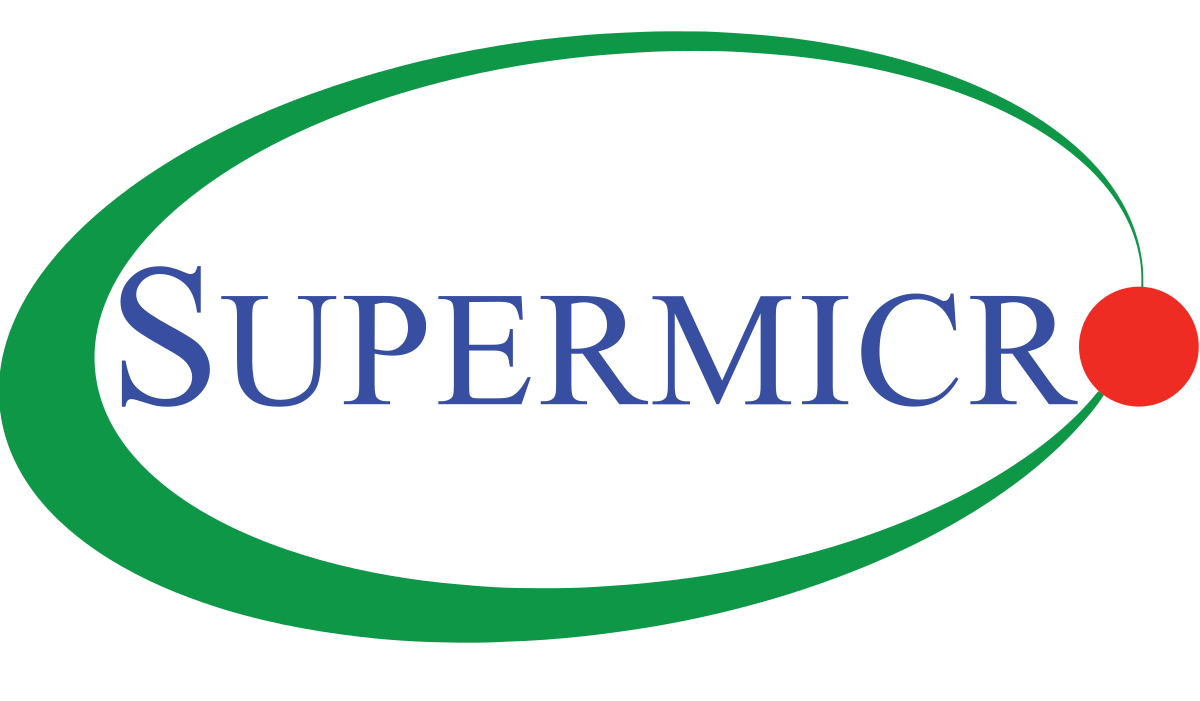
Supermicro, Inc. (NASDAQ: SMCI) Overview and Financial Performance
- Supermicro announces the expansion of its cloud service provider solutions with the 6U 20-Node MicroBlade powered by AMD's EPYC™ 4005 series processors.
- The new MicroBlade offers a 3.3x higher density compared to traditional 1U servers, highlighting Supermicro's commitment to high-performance and efficient computing solutions.
- Despite the technological advancements, SMCI's stock is currently priced at $47.92, reflecting a decrease of 8.72% and indicating a significant price difference from Goldman Sachs' target.
Supermicro, Inc. (NASDAQ: SMCI) is a prominent player in the technology sector, specializing in high-performance server and storage solutions. The company is known for its innovative products that cater to cloud computing, AI, and enterprise workloads. As of October 23, 2025, Michael Ng from Goldman Sachs set a price target of $30 for SMCI, while the stock was trading at $47.92, indicating a significant price difference of approximately -37.40%.
Supermicro recently announced the expansion of its cloud service provider solutions with the introduction of the 6U 20-Node MicroBlade, powered by AMD's EPYC™ 4005 series processors. This new product is designed to deliver high performance and efficiency, making it suitable for various applications like cloud computing and AI inference. The MicroBlade offers a 3.3x higher density compared to traditional 1U servers, accommodating up to 160 servers with 2,560 CPU cores per 48U rack.
The system's integrated Ethernet switches and 96% efficiency Titanium Level power supplies make it a cost-effective and environmentally friendly solution. Charles Liang, president and CEO of Supermicro, emphasized the significance of this addition to their EPYC-based product line, highlighting its potential to offer tremendous computing power. This development aligns with Supermicro's commitment to expanding its portfolio with scalable solutions.
Despite these advancements, SMCI's stock is currently priced at $47.92, reflecting a decrease of 8.72% with a change of $4.58. The stock has fluctuated between a low of $47.39 and a high of $51.83 during the day. Over the past year, SMCI has seen a high of $66.44 and a low of $17.25, with a market capitalization of approximately $28.48 billion.
Today's trading volume for SMCI stands at 56.83 million shares, indicating active investor interest. The company's recent product developments and market performance highlight its ongoing efforts to maintain a competitive edge in the technology sector.
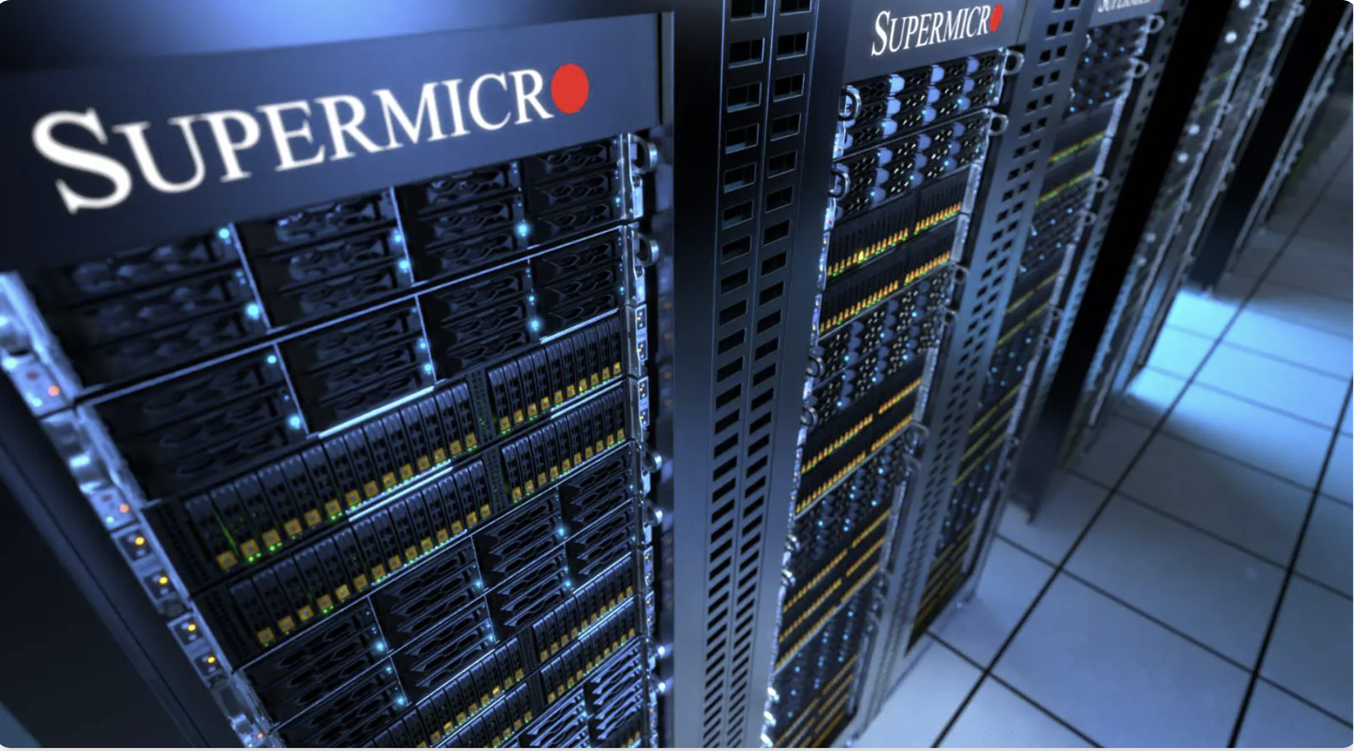
Super Micro Computer Inc. (NASDAQ:SMCI) Faces Challenges Despite Market Presence
- Goldman Sachs maintains a "Sell" rating on NASDAQ:SMCI, adjusting its price target to $30 from $27.
- SMCI's fiscal first-quarter revenue guidance has been reduced, leading to a notable decline in stock value.
- The company's market capitalization stands at approximately $28.48 billion, reflecting its significant role in the AI server market.
Super Micro Computer Inc. (NASDAQ:SMCI) is a prominent player in the AI server market, providing advanced computing solutions. Despite its significant role in the industry, Goldman Sachs has maintained a "Sell" rating for SMCI, with a "hold" action, as of October 23, 2025. At this time, the stock price stands at $47.92.
Goldman Sachs has adjusted its price target for SMCI, increasing it to $30 from $27. This change comes amid a notable decline in SMCI's stock value, following a reduction in its fiscal first-quarter revenue guidance. The company now expects revenue of $5 billion, down from the previously projected range of $6 billion to $7 billion, as highlighted by Barrons.
The stock price of SMCI has decreased by 8.72%, with a change of $4.58, reflecting investor concerns. The stock has fluctuated between a low of $47.39 and a high of $51.83 during the day. Over the past year, SMCI's stock has reached a high of $66.44 and a low of $17.25.
SMCI's market capitalization is approximately $28.48 billion, indicating its substantial presence in the market. The trading volume for the day is 56.83 million shares, showing active investor interest. Despite the current challenges, SMCI remains a key player in the AI server market.
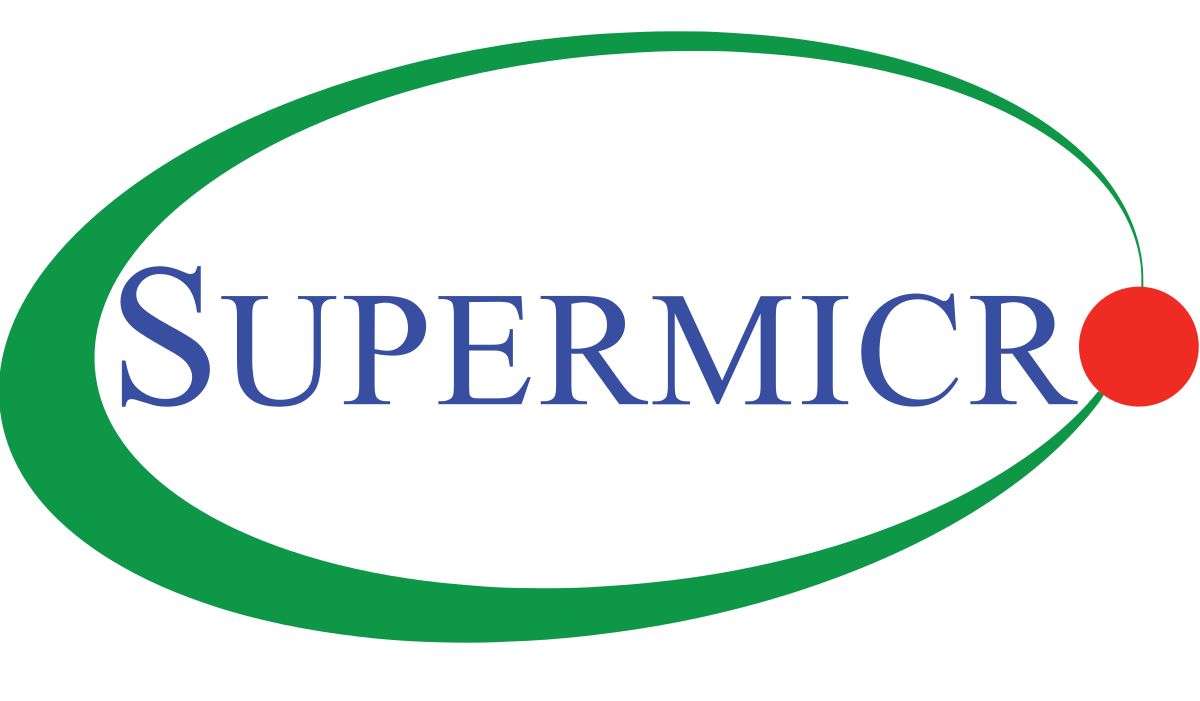
Super Micro Computer, Inc. (SMCI) Maintains "Buy" Rating Amidst Innovative Data Center Solutions
- Wedbush maintains a "Buy" rating for NASDAQ:SMCI, reflecting confidence in its innovative data center solutions.
- The introduction of the Direct Liquid-Cooled, Building Block Solutions (DCBBS) is expected to enhance efficiency for AI and HPC, driving a 19% growth in SMCI's server segment.
- SMCI forecasts revenues of $22.12 billion in 2025 and $30.2 billion in 2026, driven by the demand for AI and HPC solutions.
Super Micro Computer, Inc. (NASDAQ:SMCI) is a prominent player in the technology sector, specializing in high-performance server technology and solutions. The company is known for its innovative approach to data center solutions, particularly in the realm of artificial intelligence (AI) and high-performance computing (HPC). SMCI competes with other tech giants in the server and data center industry, striving to offer cutting-edge solutions that enhance efficiency and performance.
On June 25, 2025, Wedbush maintained its "Buy" rating for SMCI, with the action being "hold." At that time, the stock price was $46.18, as highlighted by Benzinga. This rating reflects confidence in SMCI's potential, especially with its recent introduction of the Direct Liquid-Cooled, Building Block Solutions (DCBBS). This innovative system is designed to revolutionize data centers by enhancing efficiency for AI and HPC through direct liquid cooling.
The DCBBS supports high-wattage CPUs and GPUs, which is expected to drive growth in SMCI's server segment, showing a 19% increase year over year. This system integrates a rack-scale, plug-and-play architecture that optimizes thermal performance, reduces power consumption, and increases rack density. These advancements are in response to the growing demand for AI and HPC infrastructure, which is anticipated to significantly boost SMCI's revenue.
SMCI forecasts revenues of $22.12 billion in 2025 and $30.2 billion in 2026, driven by the demand for AI and HPC solutions. By reducing reliance on traditional air-cooling systems, the DCBBS is set to support the increasing needs of AI and machine learning workloads, marking a significant step forward in data center efficiency. The stock for SMCI is currently priced at $46.48, reflecting an increase of approximately 8.49% or $3.64.
During the trading day, SMCI's stock has fluctuated between a low of $43.12 and a high of $46.93. Over the past year, the stock has reached a high of $96.33 and a low of $17.25. The company, listed on the NASDAQ, has a market capitalization of approximately $27.74 billion. Today's trading volume for SMCI stands at 61.76 million shares, indicating strong investor interest and activity.
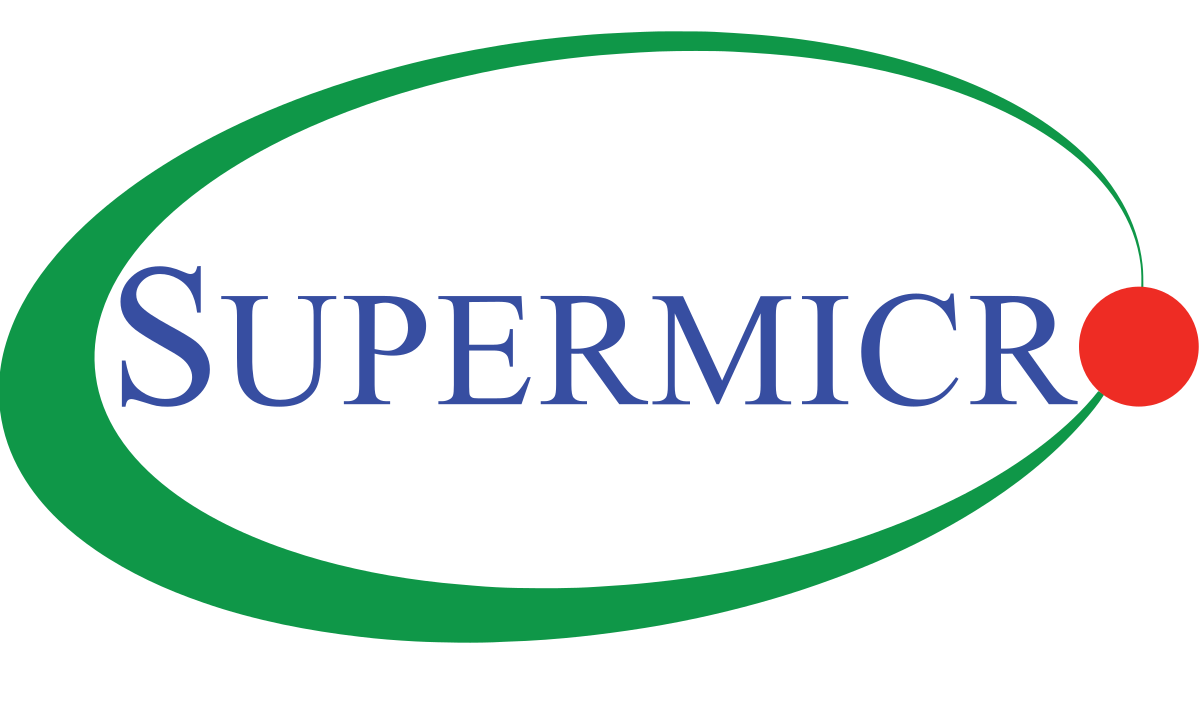
Super Micro Computer, Inc. (NASDAQ:SMCI) Receives Upgrade from Raymond James
- Raymond James upgraded Super Micro Computer, Inc. (NASDAQ:SMCI) to "Outperform" with a price target of $41, reflecting confidence in the company's strategic positioning in the AI server market.
- SMCI's stock has experienced a significant growth of 16.02%, indicating strong market presence and investor interest.
- AI revenue now makes up 70% of SMCI's total revenue, highlighting its focus and potential in the AI technology sector.
Super Micro Computer, Inc. (NASDAQ:SMCI) is a prominent player in the technology sector, specializing in high-performance server solutions. The company is particularly known for its strong presence in the branded AI server market. On May 14, 2025, Raymond James upgraded SMCI's stock to "Outperform," setting a price target of $41. At the time, the stock was priced at $38.89, as reported by Benzinga.
Raymond James' upgrade reflects confidence in SMCI's strategic positioning. Simon Leopold from Raymond James shared his optimistic outlook on 'Closing Bell Overtime,' emphasizing SMCI's resilience against trade tensions. This resilience, coupled with its focus on AI, positions SMCI as a "near AI pure play," making it an attractive investment.
SMCI's stock has shown significant growth, with a 16.02% increase, or $5.37, reaching $38.89. The stock fluctuated between $34.18 and $39.09 during the day. Over the past year, it has seen a high of $101.40 and a low of $17.25, indicating its volatile nature.
The company's market capitalization is approximately $23.21 billion, with a trading volume of 90.5 million shares on the NASDAQ exchange. This substantial market cap and trading volume highlight SMCI's strong market presence and investor interest.
AI revenue now constitutes 70% of SMCI's total revenue, underscoring its focus on AI technology. This focus is a key factor in Raymond James' positive outlook, as SMCI is well-positioned to capitalize on the growing demand for AI solutions.
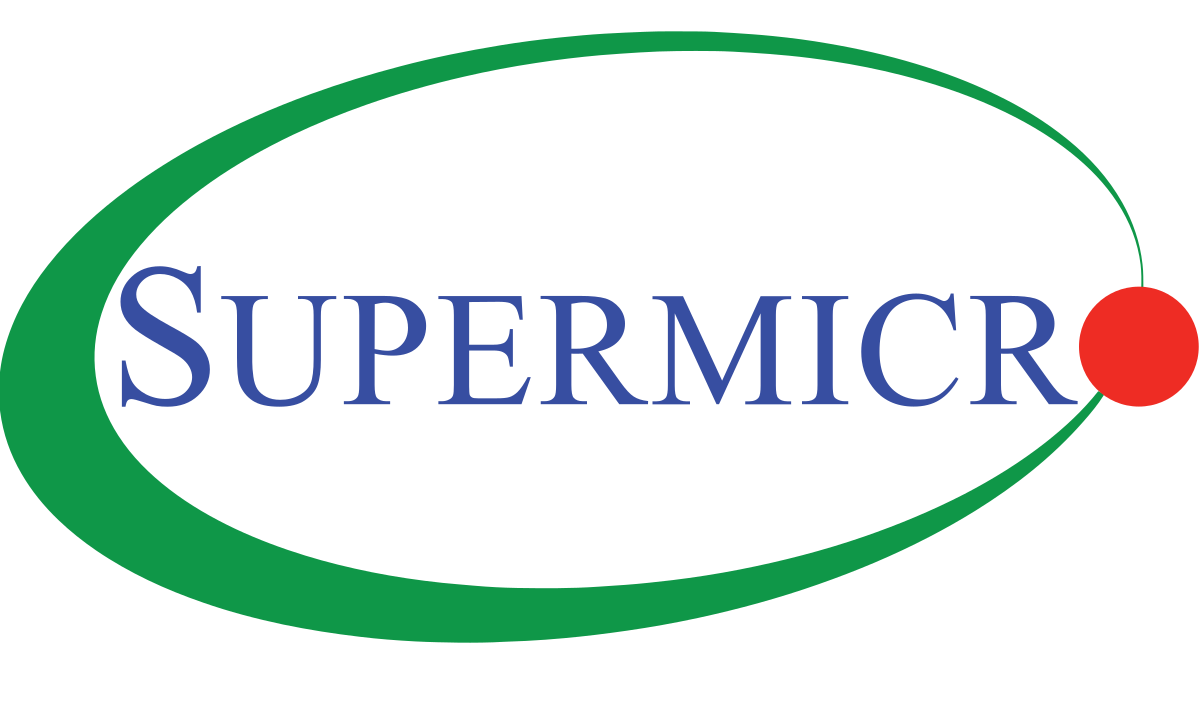
Super Micro Computer, Inc. (NASDAQ:SMCI) Rating Update and Earnings Insight
- Citigroup upgraded Super Micro Computer, Inc. (NASDAQ:SMCI) from "Reduce" to "Neutral".
- Analysts expect a decrease in earnings per share but a significant increase in quarterly revenue.
- SMCI's stock has experienced significant volatility over the past year, with a wide range between its high and low prices.
Super Micro Computer, Inc. (NASDAQ:SMCI) is a company that designs and manufactures high-performance server and storage solutions. It operates in a competitive market alongside companies like Dell Technologies and Hewlett Packard Enterprise. On May 6, 2025, Citigroup updated its rating for SMCI from "Reduce" to "Neutral" when the stock was priced at $32.52, as highlighted by Benzinga.
This rating change comes as Super Micro Computer prepares to release its third-quarter earnings results. Analysts expect earnings of $0.30 per share, a decrease from $0.67 per share in the same period last year. Despite this anticipated drop in earnings per share, the company is projected to report a significant increase in quarterly revenue, reaching $5.05 billion compared to $3.85 billion a year earlier.
The company's recent adjustment of its preliminary guidance for the third quarter may have influenced market expectations. On Monday, SMCI shares experienced a decline of 4.6%, closing at $32.17. However, the stock price has since increased to $32.52, reflecting a 1.09% rise or $0.35. During the day, the stock fluctuated between a low of $31.52 and a high of $32.81.
Over the past year, SMCI's stock has seen a high of $101.40 and a low of $17.25, indicating significant volatility. The company has a market capitalization of approximately $19.41 billion, with a trading volume of 16.26 million shares on the NASDAQ exchange. As the earnings call approaches, analysts have revised their forecasts, which could impact investor sentiment and the stock's performance.

Super Micro Computer, Inc. (NASDAQ:SMCI) Rating Update and Earnings Insight
- Citigroup upgraded Super Micro Computer, Inc. (NASDAQ:SMCI) from "Reduce" to "Neutral".
- Analysts expect a decrease in earnings per share but a significant increase in quarterly revenue.
- SMCI's stock has experienced significant volatility over the past year, with a wide range between its high and low prices.
Super Micro Computer, Inc. (NASDAQ:SMCI) is a company that designs and manufactures high-performance server and storage solutions. It operates in a competitive market alongside companies like Dell Technologies and Hewlett Packard Enterprise. On May 6, 2025, Citigroup updated its rating for SMCI from "Reduce" to "Neutral" when the stock was priced at $32.52, as highlighted by Benzinga.
This rating change comes as Super Micro Computer prepares to release its third-quarter earnings results. Analysts expect earnings of $0.30 per share, a decrease from $0.67 per share in the same period last year. Despite this anticipated drop in earnings per share, the company is projected to report a significant increase in quarterly revenue, reaching $5.05 billion compared to $3.85 billion a year earlier.
The company's recent adjustment of its preliminary guidance for the third quarter may have influenced market expectations. On Monday, SMCI shares experienced a decline of 4.6%, closing at $32.17. However, the stock price has since increased to $32.52, reflecting a 1.09% rise or $0.35. During the day, the stock fluctuated between a low of $31.52 and a high of $32.81.
Over the past year, SMCI's stock has seen a high of $101.40 and a low of $17.25, indicating significant volatility. The company has a market capitalization of approximately $19.41 billion, with a trading volume of 16.26 million shares on the NASDAQ exchange. As the earnings call approaches, analysts have revised their forecasts, which could impact investor sentiment and the stock's performance.
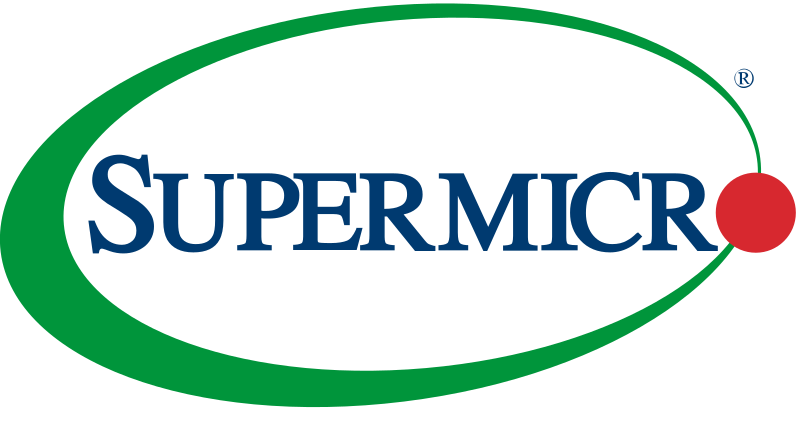
Super Micro Computer Inc. (NASDAQ:SMCI) Maintains Neutral Rating from Goldman Sachs
- Goldman Sachs maintains a Neutral rating for Super Micro Computer Inc. (NASDAQ:SMCI), indicating limited short-term upside potential.
- SMCI is recognized for its potential to expand gross margins by increasing sales to enterprise customers.
- The stock has experienced significant volatility, with a yearly high of $119.80 and a low of $17.25.
Super Micro Computer Inc. (NASDAQ:SMCI) is a company that designs and manufactures high-performance server and storage solutions. It serves a variety of industries, including cloud computing, data centers, and enterprise IT. SMCI competes with other tech giants in the server market, such as Dell Technologies and Hewlett Packard Enterprise.
On March 10, 2025, Goldman Sachs maintained its Neutral rating for SMCI, advising investors to hold the stock. At that time, the stock was priced at $37.18. This rating suggests that Goldman Sachs sees limited short-term upside potential for SMCI, but does not recommend selling the stock either.
Despite some skepticism, SMCI has received a vote of confidence from analysts. A Rosenblatt analyst described the company as a "show-me story," indicating that SMCI needs to prove its potential to investors. However, the analyst also noted the opportunity for SMCI to expand its gross margins by increasing sales to enterprise customers.
Currently, SMCI's stock is priced at $37.32, reflecting a decrease of approximately 2.41% or $0.92. The stock has fluctuated between $36.76 and $39.45 during the trading day. Over the past year, SMCI has seen a high of $119.80 and a low of $17.25, indicating significant volatility.
SMCI's market capitalization is approximately $22.15 billion, with a trading volume of 54.55 million shares on the NASDAQ exchange. This data suggests that while the stock has experienced fluctuations, there is still considerable interest and activity surrounding SMCI in the market.







